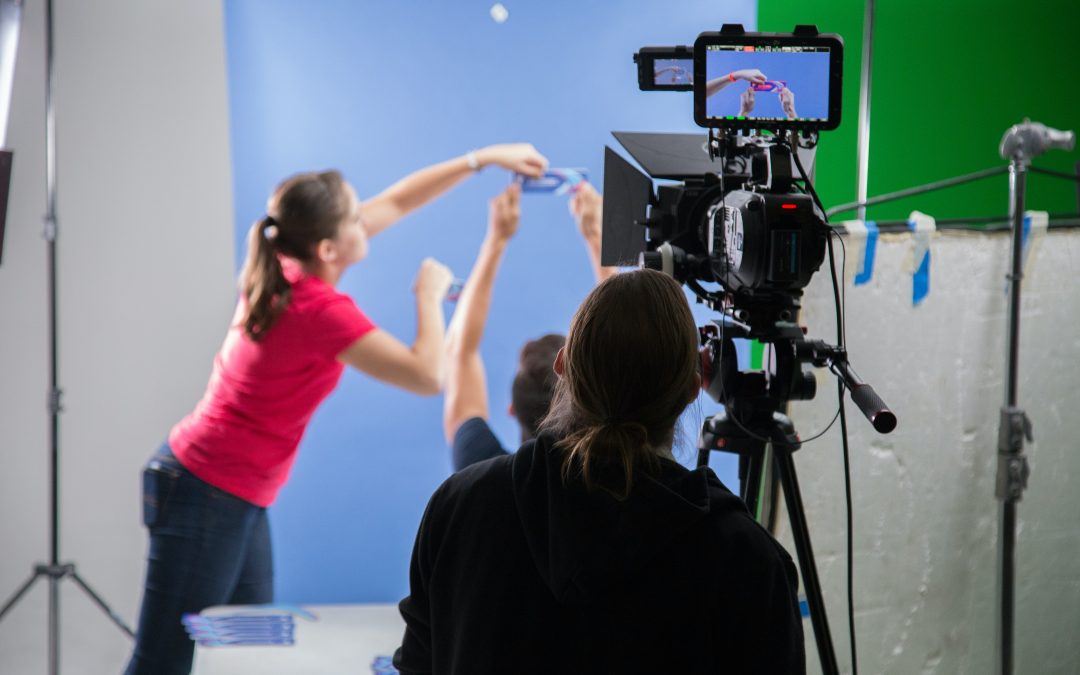Video marketing has been around for some time now and has become an integral part of a comprehensive marketing strategy. In today’s social media landscape, still, images don’t cut it anymore. If you want to create an effective social media campaign, the video should be the main focus.
In recent years, video has taken over social media by storm. It’s a versatile tool that can be used to advertise your products or services, boost engagement on digital and social platforms, educate your customers, and attract new audiences. The opportunities are endless.
How important is it? If you don’t create videos, you risk losing to your competitors. Viewers prioritize authenticity, so the more straightforward and genuine your video is, the higher it will rank in search results.

However, for someone new to video production, the equipment, lighting, and editing tools can be overwhelming. That’s why we’ve put together this handbook, which provides step-by-step instructions on how to create and distribute a social media video for your business.
Start by creating an outline for your video
Prioritize discussing the objective of your video before moving on to any other tasks. Why is this important? Because every step you take in the video production process should contribute to the purpose of your video and the desired action you want your viewers to take after watching it.
Without a clear goal, you and your team may end up stuck in an endless cycle of reshooting, reframing, and editing, resulting in a significant waste of time.
Prepare a script for your video
You’ll find everything from heartbreaking documentaries to vloggers to the latest kitten video on YouTube. There is no doubt that scripts are needed for most corporate videos.
Otherwise, you might end up spending more time editing than necessary, resulting in an overly long film that loses its audience. People expect professionalism from brands, and incorporating cuts, music, and transitions can enhance the overall quality of the video. With the help of FlexClip video maker, you can give your video an aesthetic look that meets your requirements. To create a script, it’s a good idea to start with an outline, much like a blog post.
Know your camera
Many businesses shy away from video marketing because they are concerned about their equipment. However, learning how to capture video doesn’t have to be a daunting task. To start with a DSLR, familiarize yourself with the following settings: frame rate, shutter speed, ISO, aperture, and color balance. It’s best to have your camera nearby when reading the manual settings so you can experiment with them.
- Frame rate:
There are various options for customizing the frame rate, just like with video ideas. 24 frames per second (fps) and 30 frames per second (fps) are the most commonly used options.
- Aperture:
The size of the opening through which light enters the camera is called the aperture. It is adjusted to control the amount of light reaching the camera sensor. The f-stop is the unit of measurement used to describe the size of the aperture. The smaller the f-stop value, the wider the aperture.
- ISO:
ISO is the last parameter to consider in the exposure triangle. It is used by photography and video professionals to measure the camera’s ability to capture detail in low-light conditions. The camera has several settings, which are indicated by a series of digits (such as 200, 400, 800, 1600, etc.). Higher values indicate a more light-sensitive camera.
Sound and lighting
When creating social media videos, it’s crucial to pay attention to lighting and audio. Regardless of whether you’re uploading a pre-recorded video or hosting a live event, your audience cares about the quality of these two elements. Poor sound and lighting can negatively impact your brand’s reputation and lead to loss of customer support.
However, you don’t necessarily need to invest in expensive equipment to achieve good quality. Many YouTube influencers use natural lighting from windows or ceiling lights for their videos. The key is to ensure that you are visible and audible to your audience. Depending on a laptop’s built-in camera and microphone for recording professional-looking videos is unlikely to yield optimal results.
Shooting
Regardless of your role, it is crucial to have an understanding of the other team’s approach. The camera operator might assume that they have captured enough footage and asked all the right interview questions. However, it’s important to keep in mind that your video will be edited later on, which can help you make better decisions and save time during post-production. To develop a “shoot to edit” mindset, it’s important to leave some extra footage at the beginning and end of each clip as a buffer.
Organize videos
Capturing video requires a thorough examination of how you organize your computer and your files. If you work from your desktop, having a cluttered workspace can be a hindrance. To avoid this, consider saving your video files in an external hard drive or cloud storage instead of your computer’s internal hard drive. Video files are typically large and can quickly consume your storage space, slowing down your computer’s processing performance.
Video Editing
Congratulations on completing the shooting of your video! You’re halfway to the finish line.
Now it’s time to dive into the details of video editing. We realize that video editing can be daunting, but fortunately, there are plenty of video editing tools available to help you trim videos, add music and transitions, and more. You can even explore free mobile apps and programs to find the perfect solution for your needs.
Post on social media websites
Sharing your videos on social media is a crucial step in getting your content seen by a wider audience. It’s important to check for any compatibility issues with different video formats before posting. Thankfully, there are automated tools available to make the uploading process easier.
To maximize the reach of your videos, it’s important to have a solid sharing strategy that covers multiple platforms. Whether you’re posting on Facebook, Instagram, or other social media sites, try to spread the word as widely as possible.
Also, if you’re looking to enhance the visual appeal of your social media posts, you can consider using FotoJet. This online graphic design tool provides templates and features to create eye-catching images and collages that can complement your video content.
Conclusion
In today’s digital age, consumers crave engaging and interactive content. The video has become one of the most effective ways to capture their attention and deliver your message. By creating high-quality videos that align with your brand and marketing goals, you can attract more leads, nurture them into customers, and establish a strong online presence. Don’t overlook the power of video in your marketing strategy and start exploring the endless possibilities it can offer to your business.


Recent Comments